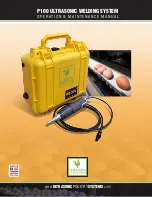
3
Engaging and Disengaging the Opener
Pull manual release lever downwards. (fig. 4)
FIXING OF WEIGHT BARS
Weight bars are generally only required on very light weight
doors. Their main purpose is to eliminate the possibility of
the door curtain “ballooning” on start-up from the fully open
position. If your door “balloons” on initial start-up, after
installing your new opener, we recommend that you fit a
weight bar to the bottom edge of your door.
Move the door manually to the mid open position. Place the
weight bar on the bottom rail of the door and secure with
appropriate fasteners Once the weight bar has been fitted
the door should have a natural tendency to lightly free fall
from the mid open position.
FIXING THE OPENER TO THE DOOR
Slide drive unit onto shaft as shown. (fig. 5)
Ensuring drive lugs engage fully with the narrowest spoke on drum wheel.
N.B.: Right-hand installation shown (inside looking out)
Ensure motor assembly is fully engaged with drum wheel spokes. Clamp shaft to mounting bracket
using “U” Bolts supplied.
Disengage the motor drive by pulling the manual release lever downwards.
Ensure locking bars (if fitted) are removed and keys removed from the lock.
CONTROL BOX
Mount the control box on a smooth flat surface. The area must be completely free of exposure to water,
either direct (rain, garden hose, sprinklers etc.) or indirect (seepage either through or down the internal
face of the wall). The control box contains sensitive electronics which will sustain damage as a result of
any
water intrusion. Water damaged electronics are not covered under the terms of the opener
warranty.
Important Note: The control box is not waterproof!
Mount control Unit approximately 1.6m from the floor out of the reach of children. Use 4x1” self-
tapping screws and raw plugs. Ensure aerial is clear of all steel supports and coiled electrical leads.
Fit electrical plug from motor unit into bottom of Control Box.
Connect the control unit power cord to an adjacent socket. Ensure that the socket is properly earthed.
INSTALLATION INSTRUCTIONS
Fig. 4





























